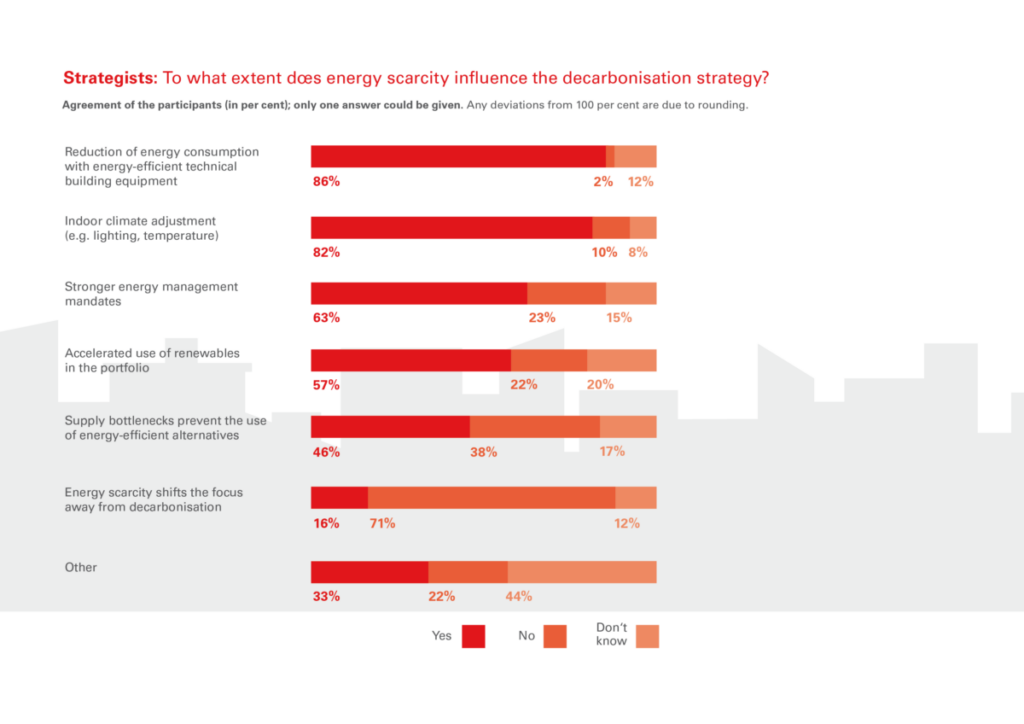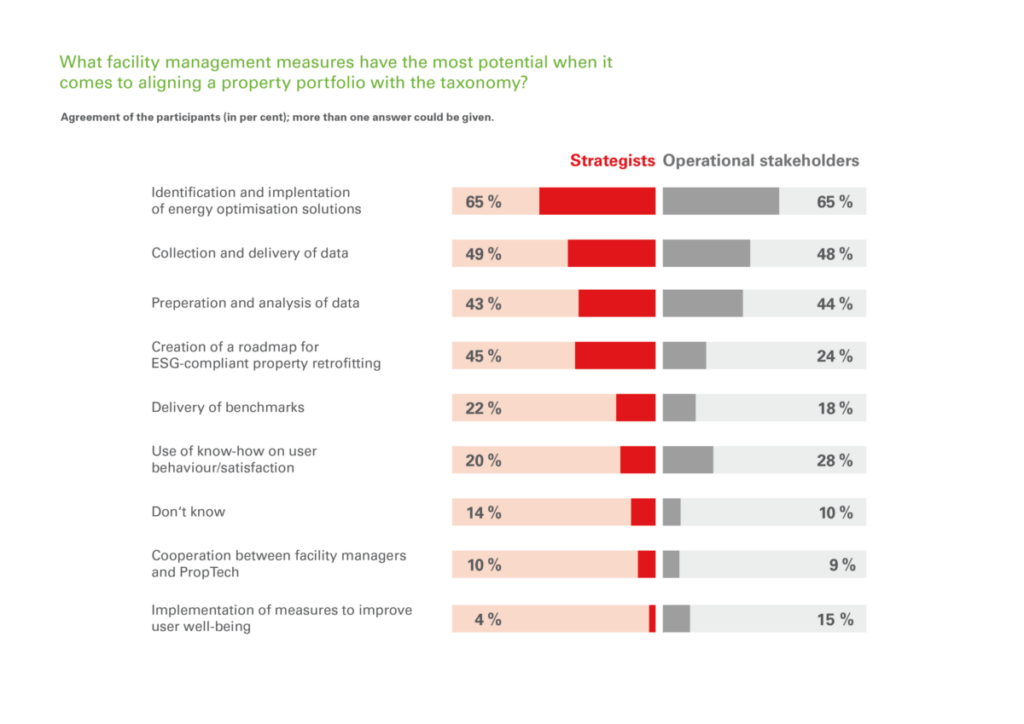By Joaquin Jimenez Zabala, General Manager of WISAG Facility Management Retail GmbH & Co. KG
The study participants were strategists and operationally active industry players. The online survey indicated that only under a quarter of the participants felt sufficiently prepared at the time of the study to align their buildings in accordance with taxonomy. This is still my experience: Most real estate owners would like to see more specific requirements from the legislator or concrete recommendations for action.
Taxonomy-compliant alignment is a management issue
The survey results are optimistic about who is heavily involved in the taxonomy-compliant alignment of real estate properties: the industry is taking the green alignment of its real estate seriously and making it a top priority. The question was directed at the strategists among the survey participants. Sixty-two percent cite the board or executive management as having a lead involvement. Fifty-one percent of the participants state that ESG officers or ESG departments are (also) heavily involved in the sustainable orientation. Thirty-three percent of the survey participants answered that external consultants are (also) heavily involved in this issue.
The most popular measure – refurbishing existing properties
The industry has long since recognized that we will only achieve the climate targets in the building sector if we get the existing buildings up to speed: A full 61 percent of survey participants say they are focusing on optimizing non-taxonomy-compliant buildings. Only 27 percent of participating strategists (also) choose new constructions or purchases. Forty-one percent do not know what their or their company’s strategy is. And one-fifth have no plans to consider EU rules in their real estate.
Renewable energy at the forefront
The most popular measures to decarbo control of energy consumers. Both strategists and operators are of this opinion. Among the operators, the refurbishment of technical building equipment also makes it to second place. In addition to general measures, the Sustainability Radar also examined the facility management area in particular. The study participants see great potential here. This is very encouraging because real estate management offers many opportunities for making real estate sustainable. The survey participants see the most significant potential in energy optimization. Second place goes to the collection and provision of data. The next step, data processing and analysis, also scores highly. Rightly so, of course. The overall results on this question show that a colorful mix of building blocks is possible, sensible, and necessary to reduce CO2 emissions in buildings.

Effects of energy shortage
The Sustainability Radar also investigated how much energy scarcity influences companies’ decarbonization strategies. Reducing energy consumption through energy-efficient technical building equipment and adapting the indoor climate are the strategists’ most popular measures to address energy shortages. Unpleasantly, but not surprisingly, nearly half of the participants confirm supply bottlenecks that stand in the way of using energy-efficient alternatives. And it is striking that 16 percent of the study participants state that the energy shortage is pushing the reduction of CO2 emissions into the background. This is the result of the survey of strategists. But there is unanimity: indoor climate adaptation and consumption reduction also land in the first places among the operatives. However, in a different order. The operational market participants had to answer to what extent the energy shortage influences the decarbonization strategy of their clients. Adaptation of the indoor climate came in first place. But there is also a severe difference: twice as many operators as strategists confirm that decarbonization takes a back seat due to the energy shortage.
So, what is the best way forward for a green future? One thing is clear: most companies have long given priority to the task of making their portfolio taxonomy-compliant. However, as I mentioned initially, many companies would like the legislature to provide them with the most concrete and practical guidelines possible. That’s why it makes sense for these companies to join forces with well-positioned partners regarding climate protection. In this way, they can benefit from their knowledge and experience or practical recommendations for action. Interdisciplinary cooperation is just as important in general. The Sustainability Radar also confirms this: property managers, asset managers, facility managers, etc., all pull together and enrich each other with their expertise. From the strategists’ point of view, such an interdisciplinary approach best supports the decarbonization of real estate.
The best way to align real estate with the taxonomy requirements is to work together. After all, several market participants are in the same boat. They are affected by the taxonomy, have the same goal, and face similar challenges.


Joaquin Jimenez Zabala
Joaquin Jimenez Zabala is the General Manager of WISAG Facility Management Retail GmbH & Co. KG
The WISAG Sustainability Radar is an annual online study. It monitors current trends and developments in ecologically oriented real estate management. WISAG develops the annually changing main topics with the “Mainzer Kreis,” an expert committee of clients, partners, and scientists. For more information, go to www.nachhaltigkeitsradar.de







